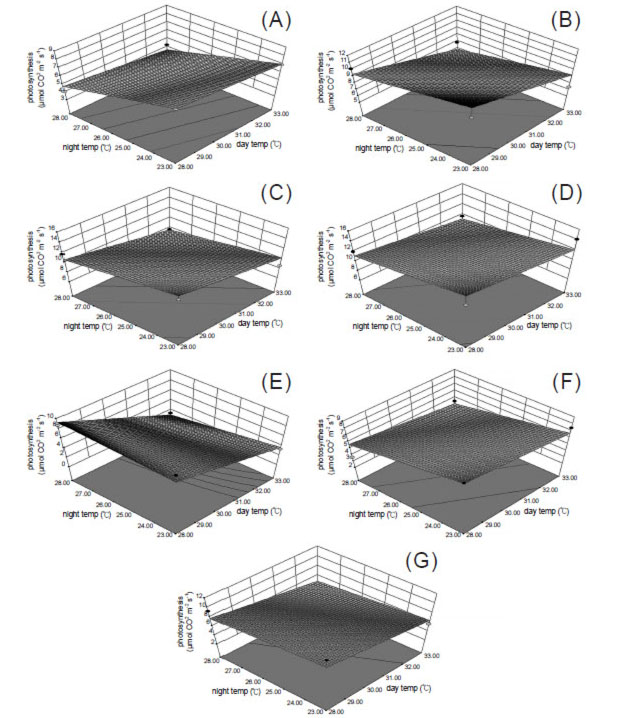All issues

Author:Jian-Cheng Ciou, Ting-Fang Hsieh, and Ting-En Dai*
Abstract:
The clones of Phalaenopsis Sogo Yukindian ‘V3’, a large white flower cultivar, are the major export Phalaenopsis in Taiwan. The clones have been selected and micropropagated for many years, while most growers use ‘V3’ as the code for marketing. The aim of this research is to clarify the physiological characteristics of these clones from different growers. The results showed that optimum day/night temperatures of ‘V3’ clones from 6 different sources were about 28/23℃, except for one which were 28/28 ℃. The optimal light intensity ranged from 125 to 250 μmol m-2 s-1, depending on plant sources. In addition, the plant with higher CO2 exchange rate per unit leaf area showed better flower quality, but affected by the sum of total leaf area. Overall, these clones from different growers exhibited different physiological characteristics which will influence the cultural management and cost for each grower. The plant quality cannot be simply considered by leaf numbers or other appearance characteristics. The difference in CO2 exchange efficiency is an important factor should be considered. Whether the difference is due to plant genetic or cultivation management needs further study.
Key words:CO2 exchange rate, Day/night temperatures, Light intensity, Flower quality
Download:![]() PDF Links
PDF Links
- 1. Using Digital Soil Mapping to Predict Soil Organic Carbon Stocks in Zhuoshui River Basin
- 2. Development of a Technique for Forecasting (or Pre-Detection) Anthracnose Disease Incidences of Green Mature Bagging Mango Fruits
- 3. Taxonomic Review of the Genus Asiophrida Medvedev, 1999 in Taiwan (Insecta: Coleoptera: Chrysomelidae: Galerucinae: Alticini), with Notes on Biology
 Submit your manuscript
Submit your manuscript
 Guide for authors
Guide for authors